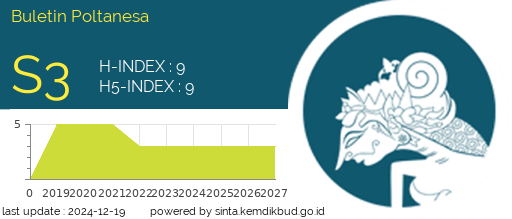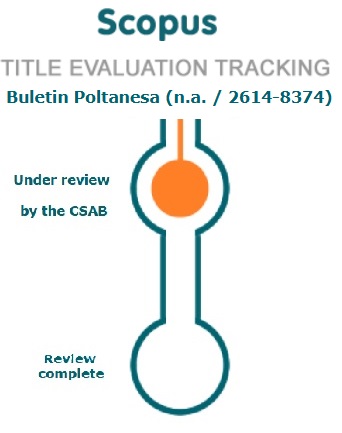Application of Pig Manure and NPK 16-16-16 Fertilizer on Germination and Yield of Pakcoy (Brassica chinensis L.)
DOI:
https://doi.org/10.51967/tanesa.v24i2.2637Keywords:
Fertilizer, Manure, NPK, Traditional Agriculture, Pig FecesAbstract
Pakcoy is one of the most popular vegetables for taste and content nutrition; with system-classified cultivation it is easy and efficient. For it is needed to trial activities related comparison between system cultivation in a manner organic, non-organic with system cultivation without fertilizer (is natural) through the utilization compound NPK fertilizers and fertilizers dirt cattle obtained pork from a farm owned by the farmer. The research going on together with Kosabangsa Project (Collaboration Together to Build Nation) phase Pilot Project Petra Baliem STIPER Wamena with the University of Tanjungpura Pontianak, in Jayawijaya. Test This is arranged in the form Draft Random Complete (RAL) with repetition divided three times in treatment A (without fertilizer/traditional), treatment B (compound NPK), and treatment C (Fertilizer dirt pig). The results show exists different influences one the same other to growth sprouts plant pakcoy tested try, i.e., treatment C had an effect real so real in increase growth sprouts plant pakcoy; meanwhile, treatment B showed influence real to plant fresh weight. Furthermore, treatment A also has an effect seen only in the speed parameter growth, which is expected to be caused Because the elongation process occurs in plants, which is a physiological process plants obtain source energy from the sunlight.
References
Ahmed, S. I., Steven, K., Mickelson, Pederson, C. H. & Baker, J. L. (2013). Swine Manure Rate, Timing, and Application Method Effects on Post-Harvest Soil Nutrients, Crop Yield, and Potential Water Quality Implications in a Corn-Soybean Rotation. Agricultural and Biosystems Engineering Publications. 56 (2): 395-408.
Anonim. (2023). Karakteristik Kimia Limbah Kotoran Ternak (Feses dan Urine). Karakteristik Kimia Limbah Kotoran Ternak (Feses dan Urine) - Sinau Ternak (Diakses, 25 Juni 2023)
Barokah, R., Sumarsono, & Darmawati, A. (2017). Respon Pertumbuhan dan Produksi Tanaman Sawi Pakcoy (Brassica chinensis L.) Akibat Pemberian Berbagai Jenis Pupuk Kandang. J. Agro Complex. ISSN 2597 - 4386.
Daulae, A. A. (2018). Respon Pertumbuhan dan Produksi Tanaman Pakcoy (Brassica rapa L.) yang diberi Pupuk Organik. Skripsi. Universitas Medan Area. Medan.
Fadilla, N. (2018). Pengaruh Pemberian Pupuk Kandang Ayam dan Pupuk Majemuk NPK 16-16-16 Terhadap Pertumbuhan dan Hasil Sawi Pakcoy (Brassica rapa L.). Skripsi. Universitas Muhammadiyah Sumatera Utara. Medan.
Faturrahman, A., Hari, M. A., Zukriyah, A., & Adam, M. A. (2015). Persepsi peternak sapi dalam pemanfaatan kotoran sapi menjadi biogas di Desa Sekarmojo Purwosari Pasuruan. Jurnal Ilmu-Ilmu Peternakan 25 (2): 36 - 42
Felania, C. (2017). Pengaruh Ketersediaan Air Terhadap Pertumbuhan Kacang Hijau (Phaceolus radiatus). Prosiding Seminar Nasional Pendidikan Biologi dan Biologi Jurusan Pendidikan Biologi, Fakultas MIPA, Universitas Negeri Yogyakarta
Firman, Y. A. (2015). Pengaruh Penambahan Pupuk Organik Dan Anorganik Terhadap Peningkatan Populasi Dan Aktivitas Mikroba Tanah, Serta Produksi Jagung (Zea Mays L.). Skripsi. Universitas Brawijaya. http://repository.ub.ac.id/id/eprint/130705/ (Diakses, 25 Juni 2023).
Gani, A., Widiyanti, S., & Sulastri. (2021). Analisis Kandungan Unsur Hara Makro dan Mikro Pada Kompos Campuran Kulit Pisang dan Cangkang Telur. Jurnal Kimia Riset. 6(1): 8 - 19
Gomez, K. A., & Gomez, A. A. (1995). Prosedur Statistik untuk Penelitian Pertanian. Edisi ke 2. Jakarta: UI Press.
Gunawan, R. (2019). Pengaruh Berbagai Jenis Pupuk Organik dan Dosis NPK 16:16:16 Terhadap Pertumbuhan Serta Hasil Produksi Tanaman Sawi Pagoda (Brassica naninosa). Fakultas Pertanian. Universitas Islam Riau.
Hartatik, W., Husnain, & Widowati, L. R. (2015). Peranan Pupuk Organik dalam Peningkatan Produktivitas Tanah dan Tanaman. Jurnal Sumberdaya Lahan. 9(2); 107-120
Hartono, A., Firdaus, M., Purwono, Barus, B., Aminah, M., & Simanihuruk, D. M. P. (2022). Evaluation of Fertilization Dose Recommendation of Ministry of Agriculture for Rice. Jurnal Ilmu Pertanian Indonesia (JIPI). 27 (2) 153164. DOI: 10.18343/jipi.27.2.153
Hasibuan, A. S. Z. (2015). Pemanfaatan Bahan Organik dalam Perbaikan Beberapa Sifat Tanah Pasir Pantai Selatan Kulon Progo. Planta Tropika Journal of Agro Science. 3(1): 32-40.
Herawati, M., Soekamto, M. H., & Fahrizal, A. (2019). Upaya Peningkatan Kesuburan Tanah Pada Lahan Kering Di Kelurahan Aimas Distrik Aimas Kabupaten Sorong. Abdimas: Papua Journal of Community Service. 1(2): 14-23.
Irfan, Rasdiyansah, & Munadi, M. (2017). Kualitas Bokasi dari Kotoran Berbagai Jenis Hewan. Jurnal Teknologi dan Industri Pertanian Indonesia. 9(1): 23-27. DOI: https://doi.org/10.17969/jtipi.v9i1.5976
Kamsurya, M. Y., & Botanri, S. (2022). Peran Bahan Organik dalam Mempertahankan dan Perbaikan Kesuburan Tanah Pertanian; Review. Agrohut. 13(21): 25-34. https://doi.org/10.51135/agh.v13i1.121
Karim, H. A., Fitritanti, & Yakub. (2020). Peningkatan Produktifitas Tanaman Sawi Melalui Penambahan Pupuk Kandang Ayam dan NPK 16:16:16. 1(1): 65-72. https://doi.org/10.46510/jami.v1i1.19.
Kurniawati, H. Y., Kuryanto, A. & Rugayah. (2015). Pengaruh Pemberian Pupuk Organik Cair dan Dosis Pupuk NPK Majemuk Terhadap Tanaman Mentimun (Cucumis sativus). J. Agrotek Tropika. 3(1):30.
Kaswinarni, F., & Nugraha, A. A. A. (2020). Kadar Fosfor, Kalium dan Sifat Fisik Pupuk Kompos Sampah Organik Pasar dengan Penambahan Starter EM4, Kotoran Sapi dan Kotoran Ayam. Titian Ilmu: Jurnal Ilmiah Multi Sciences. 12(1): 1-6. https://doi.org/10.30599/jti.v12i1.534
Kusuma, M. E. (2012). Pengaruh Beberapa Jenis Pupuk Kandang terhadap Kualitas Bokashi. Jurnal Hewani Tropika, 1 (2): 41- 46.
Lesilolo,M. K., Riry, J., & Matatula, E. A. (2013). Pengujian Viabilitas dan Vigor Benih Beberapa Jenis Tanaman yang Beredar di Pasaran Kota Ambon. Jurnal Agrologi. 291): 1-9.
Lina W, Xiaoyu Y, Zhonghai R, Xiufeng W. (2014). Regulation of Photoassimilate Distribution between Source and Sink Organs of Crops throught Light Environment Control in Greenhouse. Agric. Science 5(4) 250-256.
Missdiani, Lusmaniar, dan Wahyuni A. U. (2020). Pengaruh Pemberian Pupuk Organik Cair dan Dosis Pupuk NPK Terhadap Pertumbuhan dan Produksi Tanaman Pakcoy (Brassica rapa L.) di Polybag. Jurnal Ilmu Pertanian Agronitas, 2(1): 13-33.
Moenek, D. Y. J. A., & Toelle N. N. (2019). Pemanfaatan Limbah Ternak Sebagai Bahan Pembuatan Pupuk Bokashi dalam Kegiatan PKM Ternak Babi Ramah Ramah Lingkungan. Jurnal Pengabdian Masyarakat J-DINAMIKA, 4(1): 10-11.
Nokas Y., Taolin, R. I. C. O. & Lelang, M. A. (2015). Pengaruh Waktu Aplikasi dan Dosis Pupuk Kandang Babi Terhadap Pertumbuhan dan Hasil Tanaman Kacang Kedelai (Glycine max, (L.) Merr.). Jurnal Pertanian Konservasi Lahan Kering, Savana Cendana 1 (1) 31-37.
Novizan. (2002). Petunjuk Pemupukan yang Efektif. Agromedia Pustaka. Jakarta
Nurshanti, D. F. (2009). Pengaruh Pemberian Pupuk Organik Terhadap Pertumbuhan dan Hasil Tanaman Sawi Caisim. Jurnal Agronobis.
Pandelaki, M., Gasah, O., & Rompas, I. (2021). Pengaruh Pupuk Bokashi Kotoran Ternak Babi dan Eceng Gondok (Eichornia crassipes) Terhadap Pertumbuhan Tanaman Tomat (Lycopersicum esculentum Mill). Buletin Sariputra, 11(1): 1-6.
Prasasti, D., Prihastanti E. & Izzati, M. (2014). Perbaikan Kesuburaan Tanah Liat dan Pasir dengan Penambahan Kompos Limbah Sagu untuk Pertumbuhan dan Produktivitas Tanaman Pakcoy (Brassica rapa var. chinensis). Buletin Anatomi dan Fisiologi.Volume XXII Nomor 2.
Pratiwi. (2012). Produktivitas Kedelai (Glicine max. L.) Pada Sistem Tumpang Sari Jagung (Zea mays L.) Secara Deret Tambah. Skripsi. Fakultas Pertanian. Universitas Surakarta. p58. https://123dok.com/document/zx5ko24q-produktivitas-kedelai-glycine-sistem-tumpangsari-jagung-secara-tambah.html#fulltext-content (Diakses, 25 Juni 2023)
Purba T., Situmeang, R., Rohman, H. F., Mahyati, Arsi, R., Firgiyanto, Junaedi, A. S., Saadah, T. T. Junairiah, Herawati, J. & Suhastyo, A. A. (2021). Pupuk dan Teknologi Pemupukan. Yayasan Kita Menulis. Medan. Hlm. 165.
Putri, S. L. (2016). Pengaruh Pemberian Dosis Pupuk NPK dan Pupuk Hayati Terhadap Pertumbuhan dan Produksi Tanaman Sedap Malam (Polianthes tuberosa L). Skripsi. Universitas Lampung.
Rohimah, H. S., Lestari & Palobo F. (2019). Effect of NPK Fertilizer Dosage on Growth and Yield of Shallot, District Jayapura, Papua. Ziraa’ah. 4(2): 163-169.
Roidah. I. S. (2013). Manfaat Penggunaan Pupuk Organik Untuk Kesuburan Tanah. Jurnal Universitas Tulungagung Bonorowo. 1(1): 30-42.
Sarawa & Baco, A. R. (2014). Photosynthate Partition of Soybean Cultivars (Glicine max. (L.) Merr.) on Ultisol. Jurnal Agroteknos. 4(3): 152-159.
Setyanto, K., & Nasirudin. (2013). Kandungan N, P, K Tanah di hutan Bunder. Jurnal. Rekayasa Lingkungan. 13(2): 5-11.
Simatupang, H., Hapsoh & Yetti, H. (2016). Pemberian limbah cair biogas pada tanaman sawi (Brassica juncea L.). JOM Faperta, 3 (2): 1-13.
Subandi. (2013). Peran dan Pengelolaan Hara Kalium Untuk Produksi Pangan di Indonesia. Pengembangan Inovasi Pertanian. 6(1): 1-10.
Suwandi., Sopha, G. A., & Yufdy, M. P. (2015). Efektivitas Pengelolaan Pupuk Organik, NPK, Dan Pupuk Hayati Terhadap Pertumbuhan Dan Hasil Bawang Merah. J. Hort. 25 (3): 208-221
Syafrizal., Ridwan & Iwan. (2017). Pengaruh Pemberian Pupuk Majemuk Intan Super dan Pupuk NPK Mutiara Terhadap Pertumbuhan dan Produksi Tanaman Sawi (Brassica juncea L.). Jurnal Peneltian Pertanian Bernas. Jurusan Agroteknologi Universitas Asahan. Medan.
Taisa, R., Purba, T., Sakiah, Herawati, J., Junaedi, A. S., Hasibuan, H. S., Junairiah, & Firgiyanto, R. (2021). Ilmu Kesuburan Tanah dan Pemupukan. Publisher: Yayasan Kita Menulis: 110hlm. ISBN: 978-623-342-165-2.
Tando, E. (2018). Upaya Efisiensi dan Peningkatana Ketersediaan Nitrogen dalam Tanah serta Serapan Nitrogen pada Tanaman Padi Sawah (Oryza sativa L.). Buana Sains. 18(2): 171-180.
Triono R., Yulia, A. E. & Adiwirman. (2018). Respon Tanaman Pakcoy (Brassica rapa L.) Terhadap Kombinasi Abu Janjang Kelapa Sawit dan Pupuk NPK di Medium Gambut. JOM Faperta UR, 5(1): 1-11.
Umar S. (2012). Pengaruh Pemberian Bahan Organik Terhadap Daya Simpan Benih Kedelai (Glycine max (L.) Merr.). Berita Biologi, 11(3): 401-410.
Vidya., Suparman & Karjo. (2016). Kajian Pupuk Majemuk PK Terhadap Produksi Bawang M
Widodo, D. (2022). Pengaruh Pemberian Jenis Pupuk Terhadap Pertumbuhan dan Hasil Tanaman Pakcoy (Brassica rapa L.). Skripsi. Universitas Pembangunan Nasional “Veteran” Yogyakarta.
Widyasari, N. L., Suyasa, I. W. B. & Dharma, I. G. W. S. (2018). Upaya Pengolahan Limbah Kotoran Babi Menjadi Kompos Menggunakan Komposter Rumah Tangga. J. Ecotrophic, 12(2): 104 – 116
Yuniarti, A., Suriadikusumah, A. & Gultom, J. U. (2017). Pengaruh Pupuk Anorganik dan Pupuk Organik Cair Terhadap PH, N-Total, C-Organik, dan Hasil Pakcoy pada Inceptisols.Prosiding Seminar Nasional 2017 Fakultas Pertanian Universitas Muhammadiyah Jakarta.
Yustiningsih, M. (2019). Intensitas Cahaya dan Efisiensi Fotosintesis pada Tanaman Naungan dan Tanaman Terpapar Cahaya Langsung. BIOEDU, 4(2): 43-48
Zein, A. M & Zahrah, S. (2013). Pemberian Sekam Padi dan Pupuk NPK Mutiara 16:16:16 Pada Tanaman Lidah Buaya (Aloe barbadensis mill). Jurnal Dinamika Pertanian. Vol. XXVIII. Nomor 1 April.
Zuhro, F., Hasanah, H. U., Winarso, S., Hoesain, M., & Habibah, S. (2018). Efektivitas Pupuk Organik Diperkaya pada Pertumbuhan Vegetatif Tabulampot Jambu Air Madu Deli Hijau (Syzygium samarangense (blume) Merr. & L.M. Perry). Agritrop 16(2): 276-282.
Zulkarnain M., Budi P., & Soemarno. (2013). Pengaruh Kompos, Pupuk Kandang dan Custom-Bio terhadap Sifat Tanah, Pertumbuhan dan Hasil Tebu pada Entisol di Kebun Ngrakah-Pawon Kediri. Jurnal Indonesia Green Technology, 2(1): 45-52.
Downloads
Published
How to Cite
Issue
Section
License
Copyright (c) 2024 Buletin Poltanesa

This work is licensed under a Creative Commons Attribution-ShareAlike 4.0 International License.
The copyright of this article is transferred to Buletin Poltanesa and Politeknik Pertanian Negeri Samarinda, when the article is accepted for publication. the authors transfer all and all rights into and to paper including but not limited to all copyrights in the Buletin Poltanesa. The author represents and warrants that the original is the original and that he/she is the author of this paper unless the material is clearly identified as the original source, with notification of the permission of the copyright owner if necessary.
A Copyright permission is obtained for material published elsewhere and who require permission for this reproduction. Furthermore, I / We hereby transfer the unlimited publication rights of the above paper to Poltanesa. Copyright transfer includes exclusive rights to reproduce and distribute articles, including reprints, translations, photographic reproductions, microforms, electronic forms (offline, online), or other similar reproductions.
The author's mark is appropriate for and accepts responsibility for releasing this material on behalf of any and all coauthor. This Agreement shall be signed by at least one author who has obtained the consent of the co-author (s) if applicable. After the submission of this agreement is signed by the author concerned, the amendment of the author or in the order of the author listed shall not be accepted.









